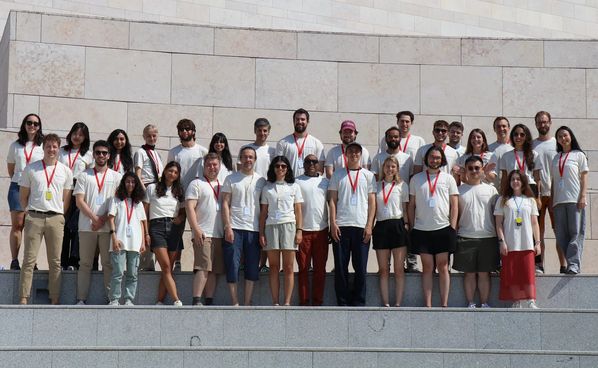Fabio Seel at Cajal Summer School on “NeuroAI - Neuroscience and AI” 2025, Lisbon, Portugal
The Cajal Summer School on "NeuroAI - Neuroscience and AI" took place from July 14th to August 1st at the Champalimaud Center for the Unknown in Lisbon, Portugal.
The topics covered a wide range of both methodology and application domains in neuroscience. From language to vision, from memory to sensory processing and from analyzing data to building models to make predictions about neuronal systems. All this in light of the question: How can we leverage AI models to advance neuroscience research?
The organizers (Fabian Sinz, Leyla Isik, Mariya Toneva and Srinivas Turaga) put together a list of faculty providing an interesting mix of topics, complemented by hands-on tutorials and student projects. Among the participants of this course was Hertie AI's Fabio Seel, sharing his experience:
"While intense, the course was an incredibly enriching experience. The exchange with the other participants about their PhD research topics alone would have been worth it. But having such high-quality lectures on cutting edge research along with hands on tutorials was very insightful and motivating.
The tutorials and especially the projects were fun, as they gave me the opportunity to work on some fascinating datasets.
The breadth of topics were very inspiring and some of the talks were particularly fascinating to me - either because the topic connected well to my own research or because the creative use of machine learning opened new directions in research.
I could go on a long time about the lectures I enjoyed: From Carsen Stringers lecture on using machine learning in various ways as tools in the data analysis pipeline, and her PhD student Fengtong Du presenting her work on "minimodels" of visual cortical neurons, to Fabian Sinz's lecture on maximally exciting images (MEIs), to (latent) state space modelling (Kevin Miller, Memming Park) or moving to mechanistic models through connectome-constrained models of the fly brain (Srinivas Turaga/Janne Lappelainen) - and I have not even mentioned Martin Schrimpf and Patrick Mineault, who talked about comparing AI models to the brain and using them as foundation models.
Certainly, among my favorite lectures was Jacob Yates' talk about active vision and the whole pipeline they are using to do experiments in their lab. It was very motivating for my own work to see how he advocated to 'close the loop' between input processing and actions such as head/eye movements influencing those inputs, as he suggested virtual environments and reinforcement learning as a way forward in that domain.
In the final project I enjoyed diverging a bit from my day-to-day research and instead work with real neuronal recordings and try to see how much we can improve movement prediction accuracy from motor cortex neurons by going beyond rate coding and including precise spike timing information."
